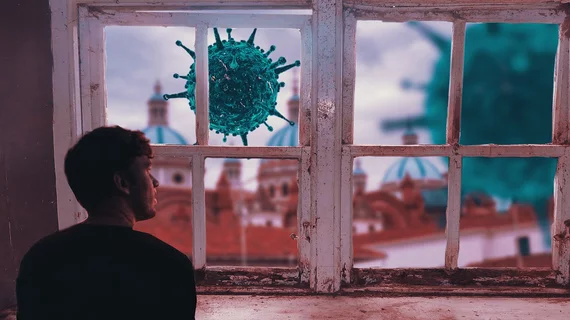Radiologists who use ‘dysfunctional’ coping strategies increase risk of experiencing anxiety by 125%
Interventional radiologists who deployed “dysfunctional” coping strategies during the COVID-19 pandemic increased their odds of experiencing anxiety by 125%, according to international survey results published Tuesday.
Such unhealthy responses to stress can include behavioral disengagement, denial, self-blaming, substance use, and venting. Polling more than 400 rads across 15 countries, researchers discovered “acceptance” was IR docs’ most popular healthy stress response. Meanwhile, the problematic practice of self-distraction showed up third on the list, researchers reported in Academic Radiology.
“As an avoidant coping strategy, self-distraction has historically been thought of as an additional risk factor for poorer long-term mental health outcomes. More recent studies, however, suggest that a positive-framed self-distraction technique may not be as dysfunctional as previously thought,” first author Andrew Woerner, MD, with Seattle-based University of Washington’s Department of Radiology, and colleagues wrote June 8. “Regardless, a greater understanding of interventional radiologists’ coping processes may help highlight potential areas of support and intervention.”
Woerner and a team from several academic institutions administered their 78-question survey in late 2020 via the Society of Interventional Radiology’s online forum. Queries covered everything from practice environment to demographics, anxiety symptoms and coping mechanisms. They received 422 responses, with 79% representing attending interventional radiologists and 21% IRs-in-training.
Nearly 42% of participants self-reported anxiety, with a Generalized Anxiety Disorder-7 screener score greater than 5, denoting a “measurable” level of such angst. Female gender, increased call coverage, lack of adequate departmental adjustments during the pandemic, and a lack of timely response were all associated with anxiety. Almost 93% of rads said they performed a procedure on someone with confirmed COVID-19, and 65% reported a significant impact on elective procedure volumes.
Acceptance and active coping were the two most popular healthy methods of addressing anxiety. Dysfunctional methods ranked low on the list, outside of self-distraction. Those who did deploy the five unhealthy response mechanisms increased their odds of reporting anxiety by greater than 125%. Behavioral disengagement produced the greatest uptick at 169%, followed by self-blame (160%). On the flipside, timely implementation of practice guidelines amid COVID produced a 50% reduction in anxiety.
“This study offers important analyses on the impact of the COVID-19 pandemic on the practice of IR and on the mental health of its professionals,” the authors concluded. “The highlighted risk factors for symptoms of anxiety amongst interventional radiologists underscore the importance of timely and adequate administrative support in the setting of public health crisis.”

